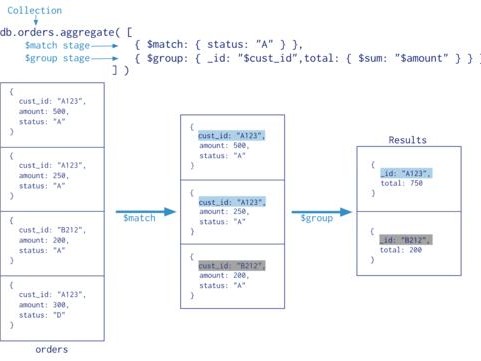文章目录
- 前言
- 一、nn.Upsample 上采样
- 二、nn.ConvTranspose2d 转置卷积
前言
这次就不废话了,我想赶在10点前回去洗头(现在9.17,还差一篇文章)
一、nn.Upsample 上采样
该函数有四个参数:

参数的介绍如下:
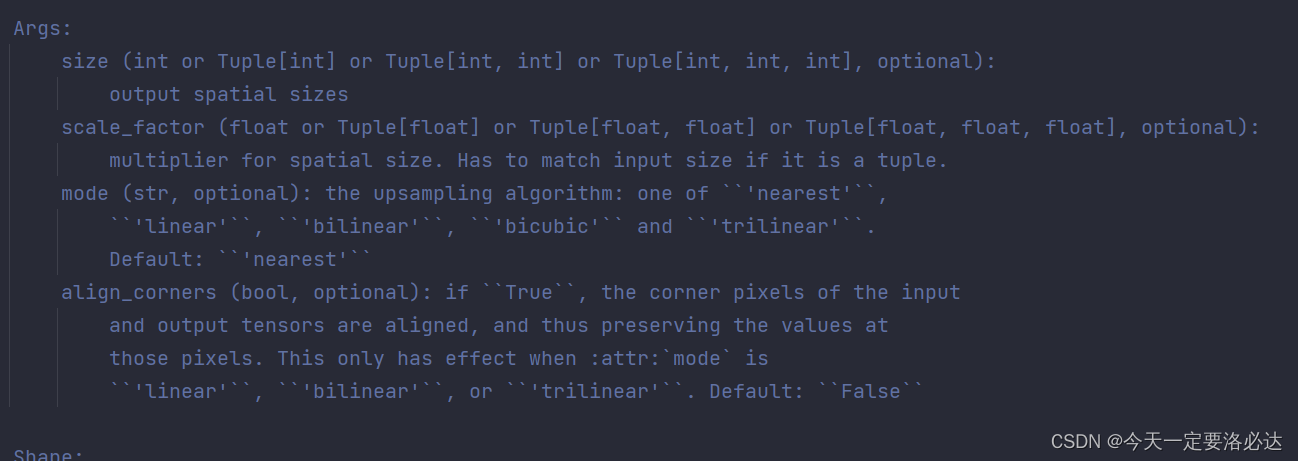
稍微翻译一下:
参数:
1)size(int或Tuple[int]或Tuple[int,int]或Tupple[int,int,int],可选):输出空间大小
2)scale_factor(float或Tuple[floot]或Tuple[floot,float]或Tuple[floot、float、float],可选):空间大小的乘数。如果是元组,则必须匹配输入大小。
3)mode(str,可选):上采样算法:“最近”,“线性”、“双线性”、“双三次”和“三线性”。默认值 ‘nearst’
4)align_ccorners(bool,可选):如果“True”,则输入的角像素和输出张量对齐,从而保持这些像素。仅当:attr:mode为“线性”、“线性”或“三线性”。默认值:False
深度学习里用的比较多的是二倍向上采样,比如经常出现在U-net网络结构里,例子如下:
import torch import torch.nn as nn A =torch.rand(1,3,24,24) up=nn.Upsample(scale_factor=2, mode='bilinear', align_corners=True) B =up(A) print(B.shape)
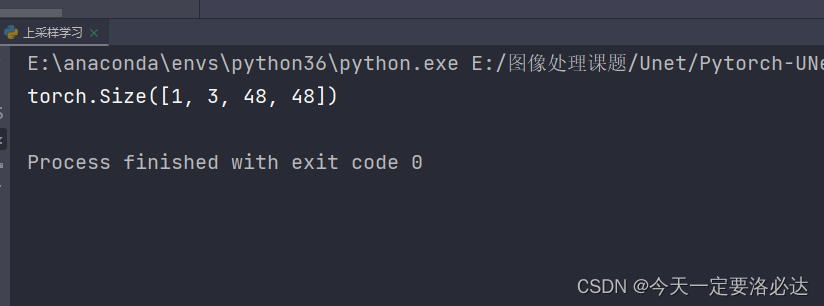
如果少写了一个维度,就会报错:
import torch import torch.nn as nn A =torch.rand(3,24,24) up=nn.Upsample(scale_factor=2, mode='bilinear', align_corners=True) B =up(A) print(B.shape)

二、nn.ConvTranspose2d 转置卷积
我们首先看看它的参数,依然如此得多
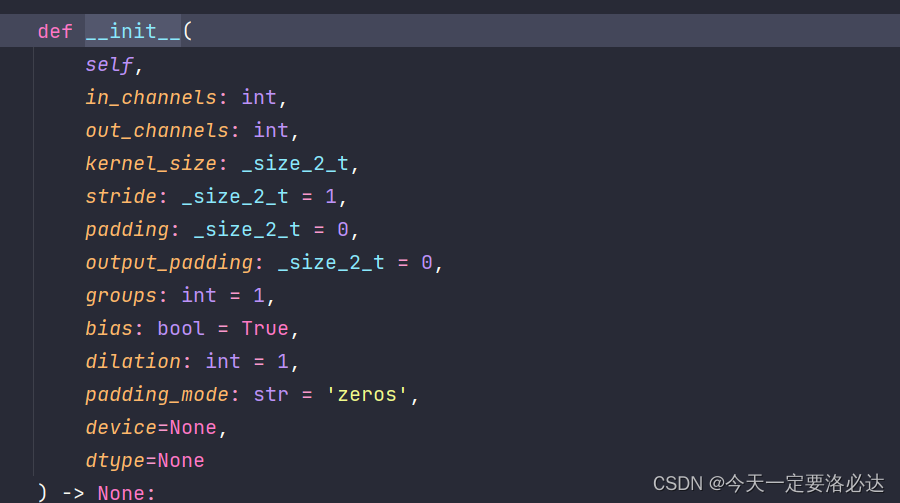
其实,转置卷积和普通的卷积操作,参数配置都是很相似的。看几个例子把
1)311型转置卷积:
import torch import torch.nn as nn A =torch.rand(1,64,24,24) up=nn.ConvTranspose2d(64,32,3,1,1) B =up(A) print(B.shape)
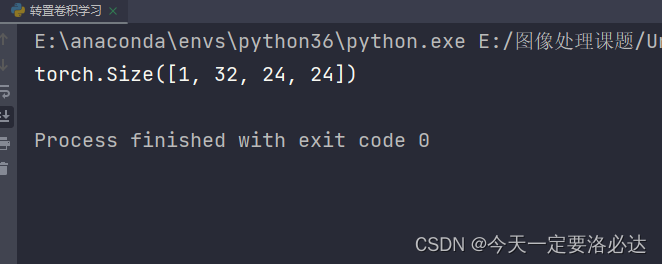
和普通卷积的311一样,宽高不变
2)310型转置卷积:
import torch import torch.nn as nn A =torch.rand(1,64,24,24) up=nn.ConvTranspose2d(64,32,3,1,0) B =up(A) print(B.shape)
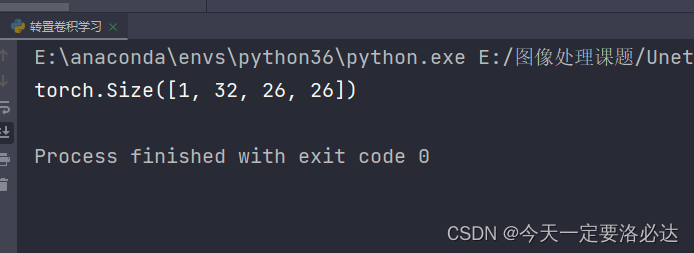
和普通卷积类似,这里是+2(普通卷积是宽高-2)






